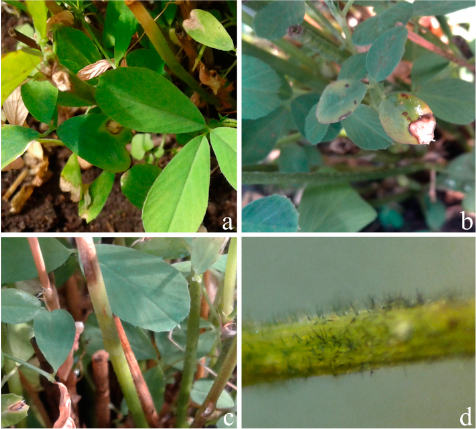Crop Protection, Volume 148, 2021
Highlights
-Based on the phylogenetic analysis, the species identified was C. americae-borealis.
-C. americae-borealis is capable of causing leaf damage.
-This study contributes for a better understanding of alfalfa anthracnose etiology.
Abstract
Alfalfa is an important forage crop in Argentina, with a large area dedicated to its cultivation. However, plant diseases are a common cause of loss because they limit productivity and reduce forage quality. Anthracnose, caused by the Colletotrichum species, is one of the most important diseases affecting alfalfa worldwide. In July 2018, alfalfa plants with anthracnose symptoms were collected in commercial fields of Cordoba province, Argentina. Initially, infected plants showed small, pale gray lesions on stems, which turned oval and developed irregular dark brown/black borders as they enlarged. Three fungal isolates were obtained from the necrotic tissues of stems and single-spore purified. Based on the morphology and multilocus phylogenetic analysis, combined sequences of the partial glyceraldehyde-3-phosphate dehydrogenase (GAPDH), histone H3 (HIS3) and actin (ACT) genes, the three isolates were identified as Colletotrichum americae-borealis. Pathogenicity testing showed these isolates were pathogenic to alfalfa and Koch’s postulates were verified by re-isolating the pathogen.

